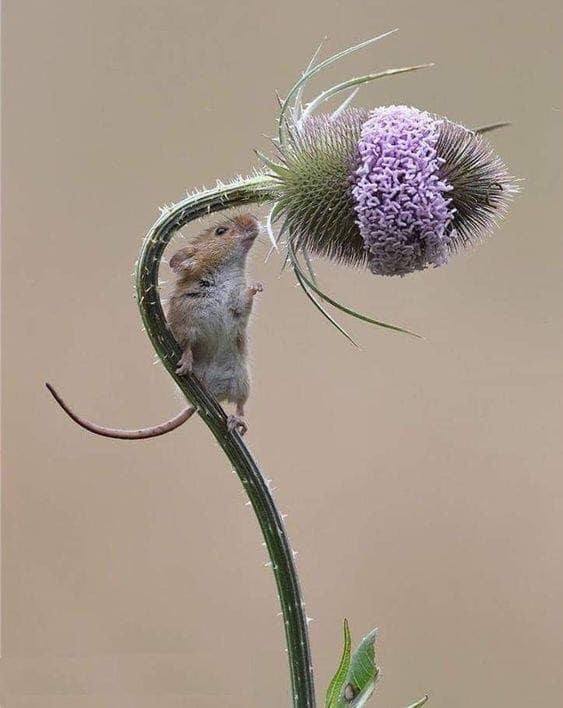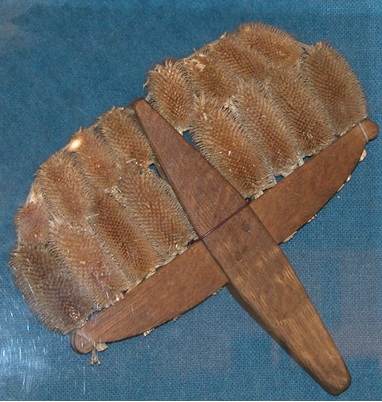Teasels
By Cathy M. Koos
Wild Teasel © Trevor Dines/Plantlife
Poetry of Teasel
Johnny prick the finger, brush and comb,
Many are the folk names teasel owns.
Venus lip and Venus basin,
For she traps insects for her nutrition.
Sacred water she collects in cups,
Refresh one’s eyes with a healing touch.
She teases out the fibres of finest wool,
Pink and white flowers decorate this useful tool.
J. Huet 2017
Oh, the joys of modern hand carders. Carefully wrapped and stored when not in use, rarely loaned out, it is hard to imagine any other tool for carding fiber. But not too long ago, a plant called Fuller’s teasel (Dipsacus fullonum) was widely used for combing, aligning fibers, and even raising nap as part of fabric finishing. In addition to neatly orienting the fibers, carding fluffs the wool, creating tiny air pockets to prevent heat from escaping
The inflorescence is a cylindrical array of lavender flowers rising dramatically from a rosette of leaves at the base. The flowers are a magnet to bees, and eventually dry into a cone of spine-tipped hard brackets. Fuller’s teasel is an herbaceous biennial growing 1-2 meters and the seeds produced in the cone are an important seed for European goldfinches and other birds. While some view teasel as an invasive, others welcome it to their garden.
Known to be in use since Roman times, teasels are native to Europe and Asia, and brought to North America in the 1700s with settlers and quickly spread coast to coast. Now teasels are commonly found in agricultural waste areas, road edges and ditches – a remnant of earlier textile days.
To manage the teasel cones, they were attached to spindles, wheels or cylinders, sometimes called teasel frames.

“Teasel Cross”
National Trust Inventory Number 117317.14
On display at Lavenham, Suffolk.
By the 20th century, teasels were largely replaced by hand cards for uniformity and longer wear. However, some people still continued to use teasels to raise the nap on woven cloth.
Teasel is easy to grow in a sunny well-drained spot, but don’t expect the cones until the second year. With a nod to its vigorous growth and careful placement, the plant provides drama in the garden year-round and gives you an opportunity to relive the old days.